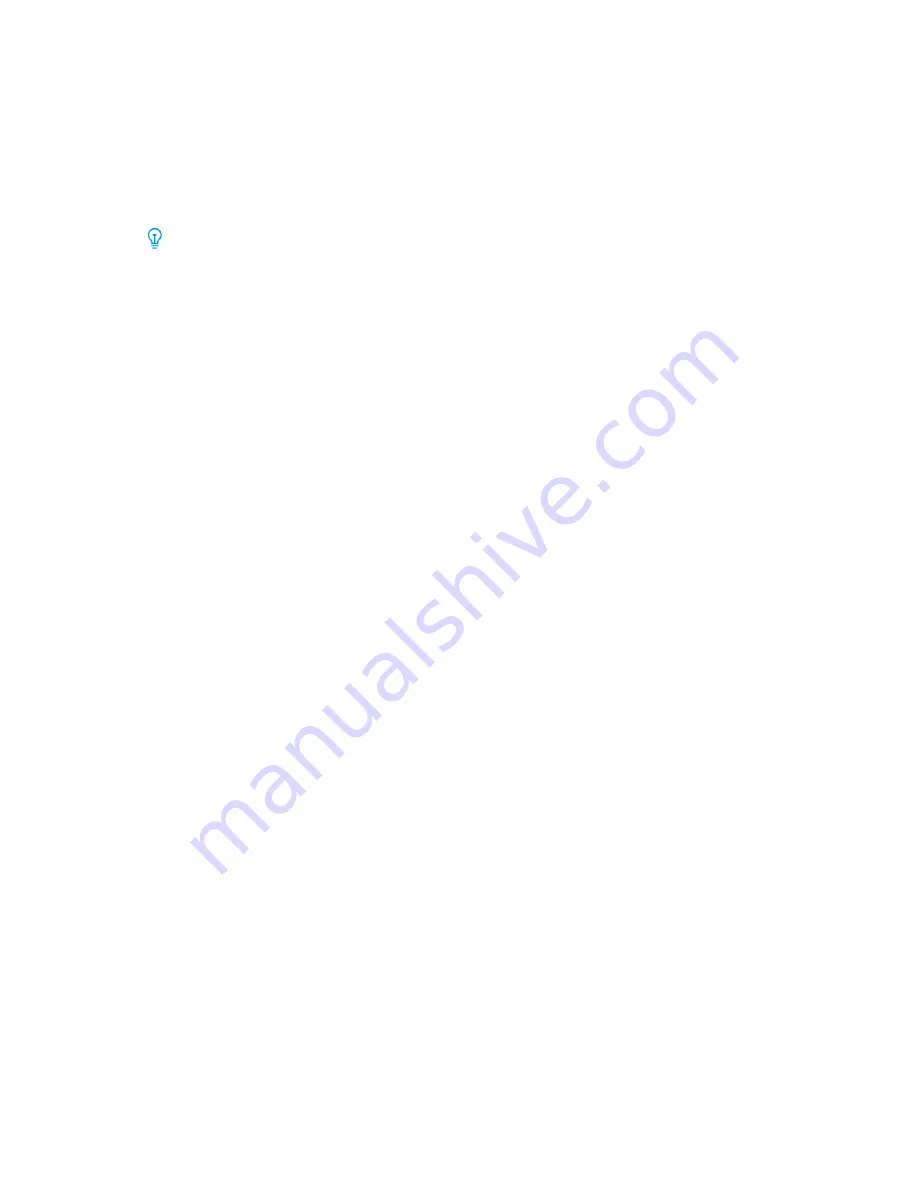
3. Select
New
or
Edit
to create a new alignment profile or to edit an existing alignment profile.
Either the New Profile Properties or the Edit Profile Properties window opens.
4. If desired, enter a new name or modify the existing name.
5. Select and edit an alignment profile option
(Registration
,
Perpendicularity
,
Skew
, or
Magnification
), and make the desired selections for that option.
Tip:
When adjusting multiple items, adjust the image in the following order: Registration,
Perpendicularity, Skew, and finally Magnification.
6. Select the
Test Print
button.
The Test Print window appears.
7. Select the desired Test Print options, including:
a.
For the Test Pattern, select
PH-Regi
b.
The desired paper tray
c.
Print quantity
It is recommended that you select a quantity of 10 test prints in order to best evaluate the
printed output.
d.
Long Edge Feed or Short Edge Feed
8. Select
Start
.
A message displays stating that the test print is in progress.
9. Retrieve your printed output.
Discard the first few prints as inconsistency tends to be greater with these first images.
10. Evaluate the test prints by holding the output at eye level near a light source. This allows you to
see the registration marks for side 1, and side 2 (if 2 sided output was selected).
a.
If you determine that the alignment between side 1 and side 2 is unacceptable and needs
adjusting, repeat this procedure.
It takes multiple adjustments to the Alignment options and running test prints before the
printed output meets customer satisfaction.
b.
Once the printed output is acceptable, continue to the next step.
11. If desired, select the another desired Alignment option and make the desired changes.
a.
Run some test prints.
b.
Evaluate the output.
c.
Repeat the previous two substeps for any additional Alignment options that require
adjusting.
When the output meets customer satisfaction, continue to the next step.
12. Select
OK
to save and close the alignment Profile Properties window.
The new or edited profile procedure (for example, AlignmentProfile2) is displayed on the
Alignment window and can be selected at any point of need in the future.
FFoolldd A
Addjjuussttm
meennttss
The Fold Adjustment feature allows you to adjust the fold position for various paper types, and set
adjustment values to various default types. You can assign a set type to each tray.
131






























